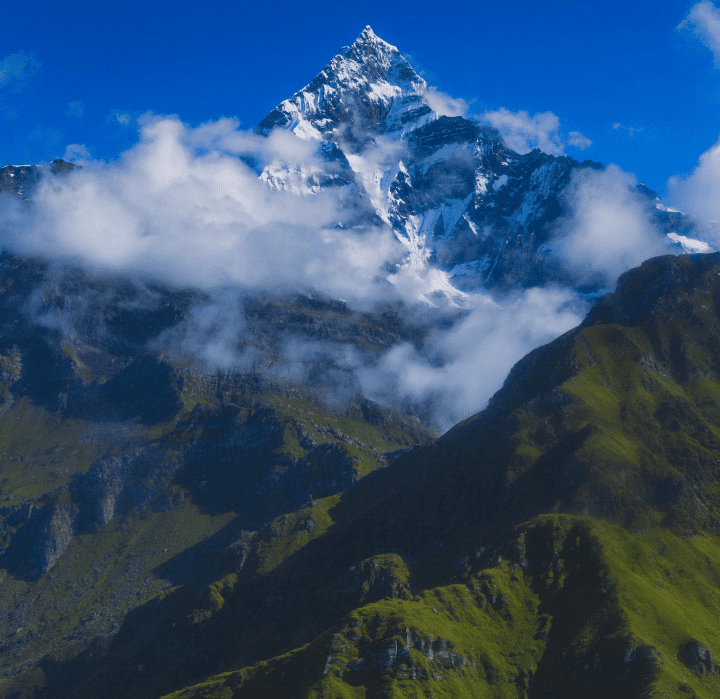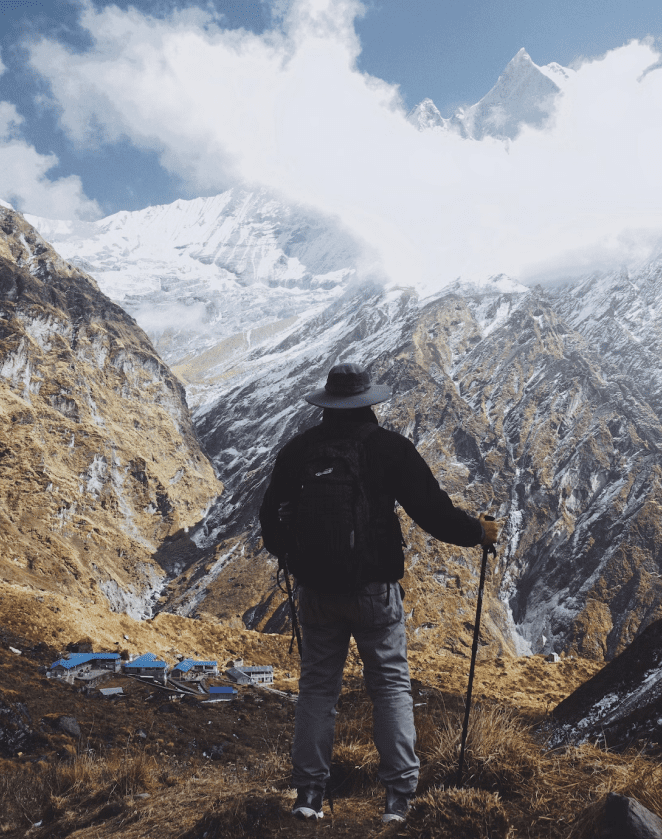PREVIOUS EXPERIENCE/FITNESS
Climbing mount Makalu, while not immensely technical, presents a physically demanding endeavor. Its challenges lie not only in the technical aspects but also in the stamina required for long days and the exposure faced during certain sections. This expedition is particularly well-suited for seasoned climbers who possess a robust fitness level and substantial climbing experience. Such individuals may be motivated to conquer Makalu as a standalone accomplishment or to gather invaluable experience for tackling even higher peaks in the future. It is recommended that those considering this venture have a solid background in tackling Alpine PD+/AD routes, as well as an ability to navigate Scottish grade 1/ll winter routes. Moreover, previous experience at altitudes of at least 4800 meters is advisable to ensure a smoother transition into the challenging conditions posed by this ascent.
A Typical Day on the Trek
A typical day on this mount Makalu expedition follows a structured routine that optimizes both travel and rest. Commencing around 7 am, participants prepare by packing their overnight gear before indulging in a hearty breakfast. The journey begins while the ambient temperature is still relatively cool. The pace maintained throughout the trek is deliberate, allowing ample time to relish the breathtaking scenery, capture photographs, engage with the local population, and maintain hydration levels. The day’s midday meal is typically savored at picturesque spots along the trail, complementing the overall experience. Most days culminate at the designated overnight campsite, reached by mid-afternoon. This grants trekkers a well-deserved opportunity to enjoy a cup of tea, unwind, or explore their surroundings for about an hour before a satisfying three-course dinner brings the day to a close.
WEATHER CONDITIONS
The weather conditions surrounding Mt. Makalu are characterized by distinct periods. From October through mid-December, post and pre-monsoon conditions prevail. Conversely, the months of April and May offer fair, dry, and stable weather. Daytime temperatures vary significantly, ranging from pleasantly warm in the valleys (20-30°C) to considerably cooler as altitude increases. The nights can be notably cold, even plummeting to temperatures as low as -30°C, especially factoring in wind chill. Therefore, to combat the harsh conditions, it’s imperative to come equipped with essential gear such as a well-insulated sleeping bag rated for temperatures as low as -30°C, an expedition-grade down jacket, and high-quality down mittens.
CATERING ARRANGEMENTS
Throughout the trekking journey and at the Base Camp, the culinary offerings are designed to address the unique challenges posed by altitude-induced loss of appetite. The daily menu ensures participants receive the necessary sustenance to fuel their bodies for the demanding ascent. Breakfast comprises nourishing options like porridge, eggs prepared in various styles, and a choice between bread and chapattis, accompanied by spreads such as jam, honey, or peanut butter.
The lunchtime spread typically includes a refreshing beverage and an assortment of items like chips, rice, lentils, vegetables, salads, sandwiches, beans, tinned fish, and meat. Dessert often features fresh or canned fruits, followed by a cup of tea.
Evening meals kick off with soup, occasionally infused with garlic to aid in acclimatization, served with accompaniments like poppadums, popcorn, or prawn crackers.
The main course ranges from local fare like Dal Bhat and Yak stew to western options like yak burgers, pasta, and even pizza. Desserts continue the delightful trend, offering treats like apple pie and cake. This comprehensive menu ensures that participants remain well-nourished throughout the expedition.
Important – The Small Print:
It’s crucial to be aware of potential flight delays when it comes to flights to and from Lukla due to weather conditions. Patience is essential in such situations, and it’s wise to carry a good book to pass the time if necessary. Should flights be delayed overnight, accommodation with bed and breakfast is provided. In cases of more extended delays, there might be the option of optional helicopter flights, usually at an additional cost.
MISSED INTERNATIONAL FLIGHTS
The expedition itinerary includes an extra day to account for adverse weather conditions. If delays extend beyond this buffer, which is uncommon, rebooking of international flights can be arranged. It’s important to note that such adjustments might incur additional costs. Flexibility regarding ticket availability and class might be necessary. Any additional payments required for these changes would need to be settled in Kathmandu, where card payments are accepted.
RESPONSIBLE TOURISM
The commitment to responsible tourism is evident in the employment of local staff, extending employment opportunities beyond traditional farming. Environmental considerations are also integrated into the trek. Limiting showers to lodges with electricity or solar power contributes to the reduction of deforestation. Washing is often achieved using warm water in bowls or with “wet ones.” While burnable waste is best disposed of at lodges, non-burnable items like bottles and batteries should be brought back to Kathmandu for proper disposal. Single-use plastic bottles are discouraged; travelers are advised to bring iodine tablets and refillable bottles for local pumped water. Soft drinks should be purchased in recyclable glass bottles.
ALTITUDE
Adequate acclimatization time is factored into the itineraries. A cautious approach, characterized by a gentle and steady pace and ample hydration, is recommended to mitigate potential altitude-related issues. The expedition leader provides a briefing upon arrival to ensure all participants are well-prepared.
USEFUL TIPS
As a precaution in case of luggage mishaps during transit, it’s advisable to wear trekking boots while on the plane. While most other items can be replaced, well-worn and comfortable boots might prove challenging to replace quickly.
EQUIPMENT
A comprehensive equipment list is supplied upon booking. Specialized items such as sleeping bags and down jackets can be rented or purchased.
BAGGAGE
To enhance comfort during travel, a light packing approach is suggested. Airlines typically restrict baggage to 20 kg, while the Lukla flight limit is 15 kg. As trekkers wear boots and one set of trekking attire, a significant portion of essentials is already worn.
VISAS AND PERMITS
Visas can be obtained upon arrival for US/UK citizens, most EU nationals, and others should check with their respective embassies. Passport validity should extend at least six months beyond the trip’s conclusion.
LOCAL EXPENSES
While most meals are covered, participants are responsible for their beverages and hotel meals. This flexibility allows individuals to choose dining options according to their preferences.
CURRENCY
The local currency is the Nepalese Rupee. Exchange facilities for UK Sterling, Euros, and US Dollars are readily available in Kathmandu. ATMs are accessible as well.
TIPPING
Tipping is customary and expected. Generally, a collective tip is given to local staff. Additionally, contributing around 1000 rupees to the Puja or mountain blessing ritual is customary and holds significance within Himalayan climbing culture.



